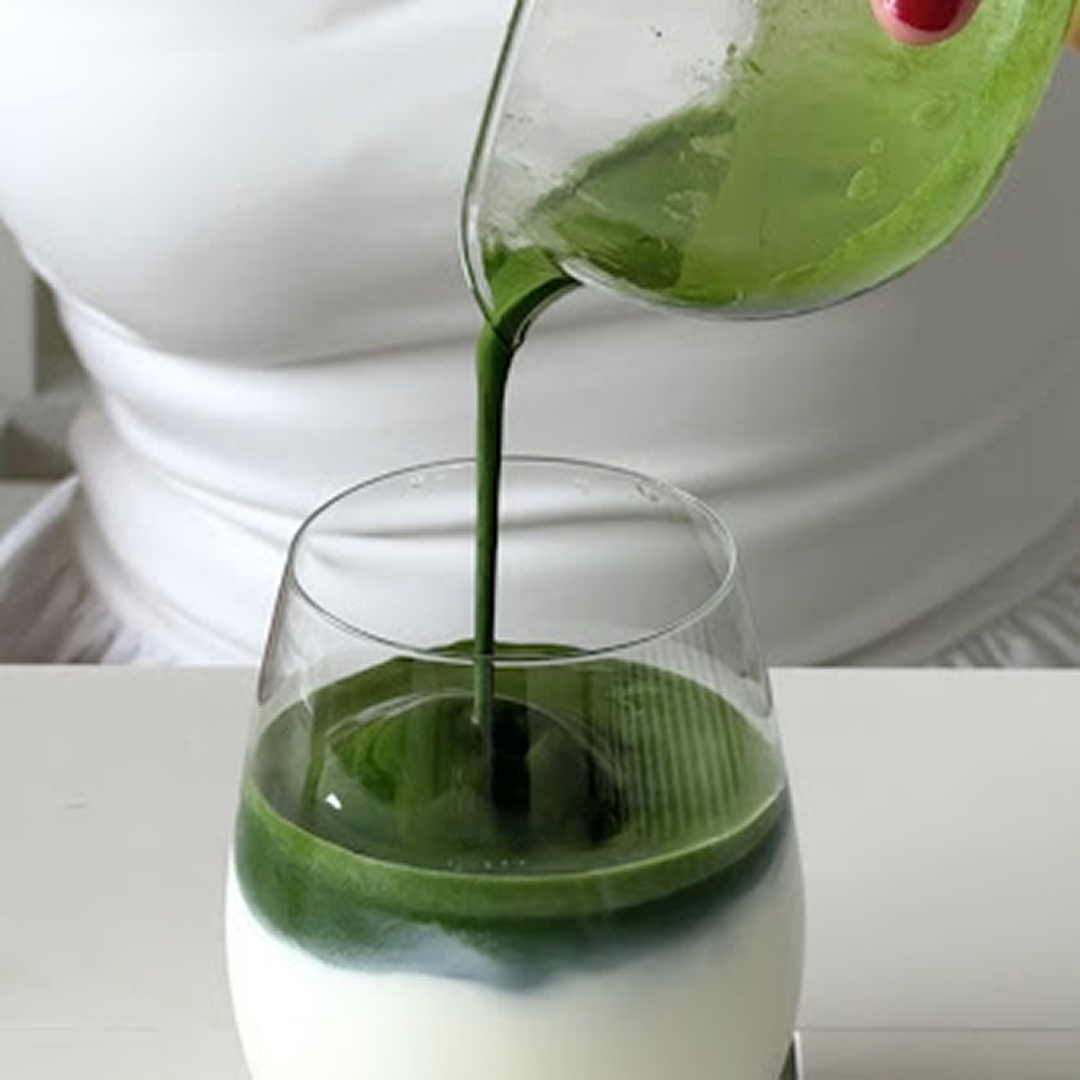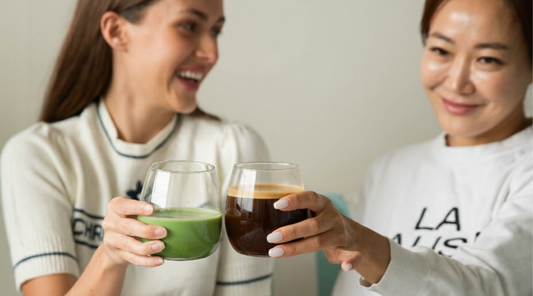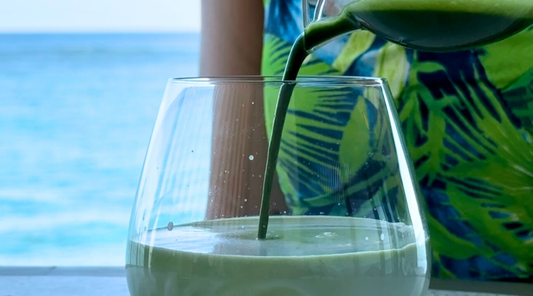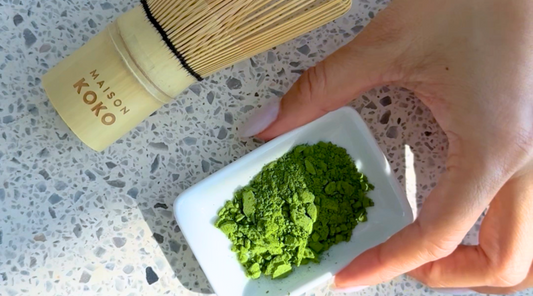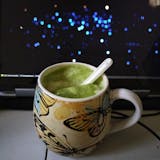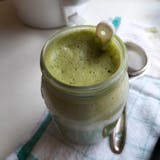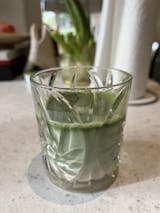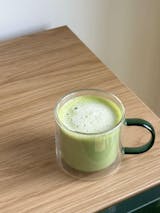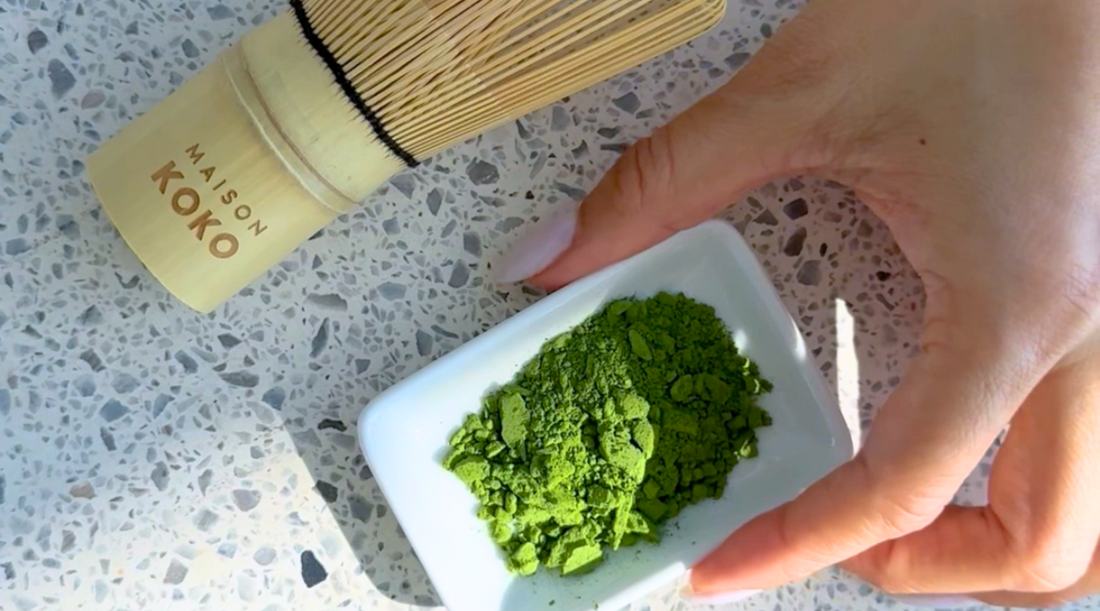
What Makes Yame Matcha Special? Japan’s Buttery Green Tea from Fukuoka
Share
Quick Take
Yame matcha is a premium, shade-grown green tea from Fukuoka Prefecture celebrated for its nutty, buttery sweetness, smooth umami, and low bitterness. Grown in misty mountain valleys, it represents the gentle, comforting side of Japanese tea.
When most people think of Japanese matcha, Uji often comes to mind. Yet nestled in the quiet hills of Fukuoka Prefecture lies Yame (八女), a tea-growing region that quietly produces some of Japan’s most exceptional green teas. Renowned for its mellow, nutty and buttery profile, Yame matcha represents a more delicate side of Japan’s tea culture.
At Maison Koko, we celebrate this understated treasure, bringing you matcha that captures Yame’s soft sweetness and smooth umami in every sip.
Check out our full range of Yame ceremonial matcha.
Why Yame Matcha Is So Special
What makes Yame stand out isn’t just geography. It’s the way centuries of cultivation and craftsmanship harmonise. Unlike the bright, grassy matchas from Uji or Shizuoka, Yame matcha is smooth and naturally sweet, often described as “buttery” or “nutty.” According to Fukuoka Yamecha, Yame produces some of Japan’s finest green teas, and its gyokuro and sencha teas have received national accolades.
This gentle character makes Yame ideal for both traditional usucha (薄茶) and modern tea lattes, as it blends smoothly without bitterness. It’s the kind of matcha that feels balanced, comforting and quietly luxurious.
A Rich History Rooted in Craft
Tea cultivation in Yame dates back to around 1423, when monk Eirin Shuzui brought tea seeds from China, establishing the foundation of Yame’s tea heritage.
Today, although the region accounts for only about 3 percent of Japan’s tea acreage, it produces a remarkably high share of the nation’s finest shaded teas, including gyokuro (玉露) and ceremonial-grade matcha.
The Climate and Terroir of Fukuoka’s Yame Region
Yame’s fields sit amid mist-covered mountains where cool air and gentle fog filter sunlight. This microclimate encourages slow leaf growth and high levels of L-theanine, the amino acid behind matcha’s calm, focused energy.
Catechins, a class of antioxidants prominent in matcha, are better preserved when leaves are shaded and harvested slowly. Combined with nutrient-rich volcanic soil and abundant mountain water, the result is tea leaves dense in chlorophyll and rich in flavour depth.
Traditional Shading and Processing
Farmers in Yame are renowned for their devotion to craftsmanship. Many still use woven straw coverings rather than only synthetic nets, filtering sunlight gradually and boosting amino acids while keeping tannins low.
After harvest, the leaves are steamed, dried, and refined into tencha (碾茶), then stone-ground slowly to prevent heat damage.
As Forbes notes, this traditional process enhances chlorophyll levels and preserves matcha’s natural compounds, giving Yame its creamy, luminous quality.
Cultivars Common in Yame Matcha
- Saemidori (さえみどり) – vivid emerald colour, floral sweetness
- Okumidori (おくみどり) – deep, mellow nuttiness
- Yabukita (やぶきた) – balance and structure
These cultivars thrive in Yame’s misty climate, producing matcha with signature buttery sweetness and smooth umami.
Learn more in our Okumidori & Saemidori Cultivar Guide.
Distinctive Flavour and Aroma of Yame Matcha
Pour a bowl of Yame matcha, and you’ll immediately notice the difference: a mellow, buttery aroma with hints of roasted nuts.
The taste begins gently sweet, deepens into rich umami, and finishes clean.
It’s less grassy than Uji matcha, less marine than Kagoshima, and exudes quiet elegance — “calm confidence,” as tea masters describe it.

Brewing Recommendations
Here's the Golden Ratio tested for the best results:
- Base Ratio (4:40): 4 g matcha · 40 mL hot water (70 °C)
- Hot Matcha Latte (200 mL): 4 g matcha · 40 mL hot water (70 °C) · 160 mL milk
- Iced Matcha Latte (300 mL): 6 g matcha · 60 mL hot water (70 °C) · 240 mL milk
For precise ratio guidance, see Maison Koko’s Matcha to Water Ratio Guide.
Nutritional and Wellness Benefits
High in catechins, chlorophyll, and L-theanine, Yame matcha offers potent antioxidant activity and sustained mental clarity.
Elevated L-theanine levels promote calm focus, the same serenity monks sought when drinking matcha in meditation.
According to Healthline, matcha contains more concentrated antioxidants than regular green tea, which may support everything from metabolism to brain health.
Choosing Genuine Yame Matcha
Authentic Yame matcha should clearly state its origin (Yame, Fukuoka) and often list its cultivar, such as Saemidori or Okumidori. Real Yame tea is shade-grown, hand-picked, and stone-milled locally. Be cautious of products labelled “Yame-style” that lack regional certification.
At Maison Koko, our Yame matcha is sourced directly from heritage farms in the area, carefully packed and sealed immediately to protect its vibrant hue and natural sweetness.
Yame vs Uji Matcha: A Gentle Contrast
| Aspect | Yame Matcha | Uji Matcha |
| Flavour | Buttery, nutty, mild | Bold, vegetal, slightly marine |
| Texture | Smooth, creamy | Silky, light foam |
| Mood | Comforting, calm | Bright, energetic |
| Cultivars | Saemidori, Okumidori | Samidori, Asahi, Gokou |
Explore more in our Yame vs Uji Matcha Comparison.
FAQs about Yame Matcha
Is Yame matcha good for beginners?
Yes, its gentle sweetness and creamy texture make it perfect for those new to ceremonial-grade matcha.
How is Yame different from Uji matcha?
Yame is softer and nuttier, while Uji is typically more vegetal and bold. Both are premium, but appeal to different palates.
Can I use Yame matcha for lattes and desserts?
Absolutely. Its low bitterness makes it ideal for baking and drinks where balance is key.
Does Yame matcha contain caffeine?
Yes, but the L-theanine content moderates its effects, creating calm alertness rather than jitters.
Glossary of Japanese Terms
- Yame (八女): Tea-growing region in Fukuoka Prefecture.
- Gyokuro (玉露): Premium shaded green tea.
- Matcha (抹茶): Finely stone-ground powdered green tea.
- Tencha (碾茶): Dried tea leaves used for matcha production.
- Usucha (薄茶): “Thin tea,” whisked to a light, frothy texture.
- Koicha (濃茶): “Thick tea,” kneaded to a syrupy consistency.
- Chashaku (茶杓): Bamboo scoop used for measuring matcha.
- Chasen (茶筅): Bamboo whisk used to froth matcha.
- Umami (旨味): Savoury flavour depth characteristic of high-quality teas.
Final Thoughts
Yame matcha embodies the elegance of Japanese craftsmanship: serene, balanced, and full of quiet character. Its nutty sweetness and smooth umami make it a favourite among tea enthusiasts who appreciate subtlety over intensity.
Whether you’re whisking a traditional bowl, crafting a latte, or simply exploring Japan’s diverse tea terroirs, Yame matcha is a cup worth savouring.
